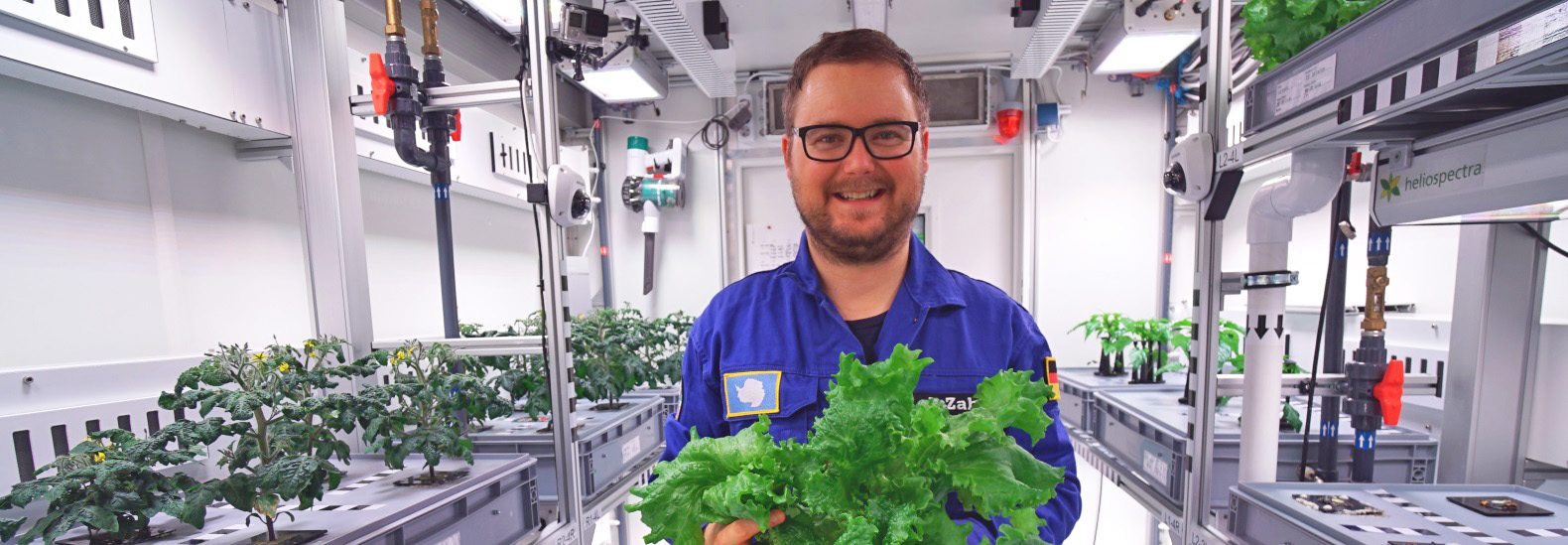Space Salad: Scientists Grow Plants in Space-like Conditions at Antarctica
Gardening in microgravity will lettuce go into space- probably even make it to Mars without a worry.
The ability to grow plants in limited conditions is aessential for the future of deep-space exploration. A critical component of future, human exploration to worlds unknown, will be the supply of edible food for crewmembers. To develop innovations in cultivating food in closed-loop systems becomes integral to future missions.
Scientists at Germany’s Neumayer Station III in Antarctica have just harvested a crop of vegetables grown in the unlikely location of their Antarctic lab. The haul consisted of 3.6 kg of salad greens, 18 cucumbers, and 70 radishes.
Cucumbers, radishes and lettuce are just some of the green delights that have been thriving in the experimental EDEN-ISS greenhouse in Antarctica. The project follows in the footsteps of successful US operations cultivating crops in the harsh climate.

In addition to the veggies they just harvested, the scientists also planted strawberries, bell peppers, and a number of herbs. By May, DLR says they
expect to be able to get about 10 pounds of produce per week.Despite temperatures in Antarctica falling below -20 degrees Celsius (-4 F) and the sun barely coming above the horizon, the first harvest from the project led by the German Aerospace Center (DLR) demonstrates how astronauts on the moon and Mars could be supplied with fresh food in the future.
This mission worked to test just how astronauts will be able to sustain themselves while in space. There will be manned missions to Mars and the moon that will seek to colonize both worlds. EDEN ISS is a consortium of European, American, and Canadian experts in human spaceflight and CEA.

“It was special to have the first fresh salad of the Antarctic,” said station manager Bernhard Gropp in a statement. “It tasted as if we had harvested it fresh in the garden.”
Located at the Neumeyer-Station III, the greenhouse defies the Arctic winter with its state-of-the-art technology; pipes supply sufficient water, lamps provide the right light, and filters and nozzles provide the right mixture of air to promote growth.
Large water tanks installed in the floor are filled with melted, filtered, and purified ice from the station. Water is then added to a “special nutrient solution” that is automatically sprayed on the plants every five to 10 minutes, a process called aeroponics. Bottles of carbon dioxide were shipped along with the container to provide the plants with ideal air. The air is then filtered by a UV radiation system similar to the closed-circuit system onboard the ISS.

In a land of extreme light cycles, the crew needed to make sure plants got a “blue and red light cocktail”. A customized water-cooled LED system allows for each light to be individually controlled by a computer. Plants are illuminated for 16 hours and get a standard eight hours of beauty rest without light.
For researchers living in Antarctica, the prospect of fresh vegetables will be an exciting change from stations’ usual dependency on planes to deliver fresh food, and reliance on frozen or dried food otherwise. For interplanetary explorers, the ability to grow food on others worlds could mean the difference between life and death.
NASA estimates that a trip to Mars and back would require thousands of pounds of food; just four crew members on a three-year mission would need more than 24,000 pounds (10,886 kilograms) of food to eat three meals per day. If those voyages could start an aeroponic garden when they landed, and synthesize other supplies (like nutrients and water) from the soil of their new home, they could extend that food supply for weeks, months, and even years without bringing the weight of extra food aboard.






























